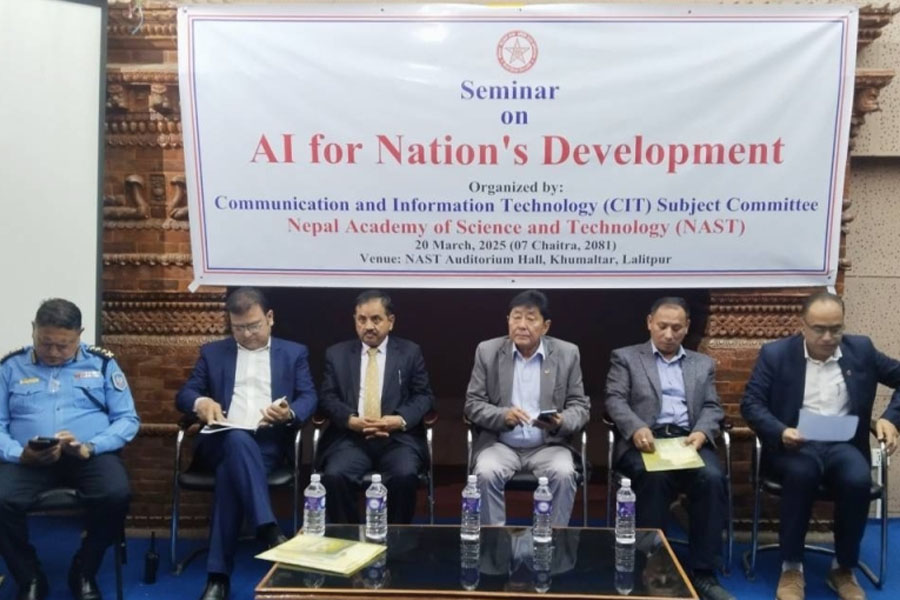The Nepal Government has announced an ambitious plan to develop its own Large Language Model (LLM) for the Nepali language. Deputy Secretary Narayan Timalsina revealed this initiative at the "AI for Nation's Development" event, sparking both excitement and skepticism about how practical this really is.
Nepal’s AI Landscape Right Now
This announcement came during a seminar organized by the Nepal Academy of Science and Technology (NAST) and the Curriculum Implementation and Technology Subject Committee. Several experts weighed in on the state of AI in Nepal:- Dr. Rabindra Prasad Dhakal from NAST pointed out that Nepal ranks 109th globally in AI readiness, meaning there is a lot of catching up to do.
- MoCIT Joint Secretary Anil Kumar Dutta discussed ongoing efforts to regulate AI development.
- NAST Academician Prof. Dr. Subarna Shakya talked about the potential applications and challenges AI presents.
- Prof. Dr. Dilip Subba stressed the need for a well-thought-out AI policy to guide development.
Can Nepal Compete in the LLM Space?

What LLMs Can and Can’t Do
Language models today power everything from chatbots and virtual assistants to content creation and data analysis. But they are not perfect:- Creativity is still robotic – AI-generated writing often feels formulaic.
- Cultural nuance is tricky – Many models struggle with regional dialects and context.
- Accuracy is not guaranteed – AI still needs human oversight to avoid misinformation.
- Computational power is a massive hurdle – Training and running LLMs require serious hardware and energy resources.
The Challenges for Nepal’s LLM Ambition
Nepal has big dreams for AI, but let’s be real. Building an LLM from scratch comes with serious challenges:- Lack of computing power – Training an LLM requires massive servers, GPUs, and energy. Nepal has hydropower, but does it have the infrastructure?
- Competition is fierce – The AI field is dominated by companies with years of experience and billion-dollar budgets. Catching up will not be easy.
- Is this the best use of funds? – Instead of trying to build a general-purpose LLM, that money could go into more targeted AI projects that directly benefit Nepal’s economy.
Smarter Alternatives Nepal Could Consider
Instead of going all-in on a full-scale LLM, Nepal might get better results by:- Focusing on specific AI applications – AI in agriculture, tourism, or healthcare could have a bigger impact.
- Building AI education and research – Strengthening local expertise could be more valuable in the long run.
- Developing AI-friendly policies – Smart regulations can encourage innovation while protecting users.
- Partnering with global AI projects – Collaboration could help Nepal benefit from cutting-edge AI without reinventing the wheel.
- Enhancing Nepali language AI tools – Rather than a full LLM, Nepal could improve language processing systems that integrate with existing models.
The Bottom Line
Nepal’s interest in AI is a positive step, but true technological progress is not always about building everything from scratch. Strategic decisions about what to develop in-house and what to adapt from existing technology could be the key to making AI work for Nepal. Whether this LLM project turns into a success or a costly experiment remains to be seen.How did we do with this article?
😍
Loved it!😕
Needs workNo Active Polls
There are currently no polls available. Check back later for new polls to participate in!
Polls will appear here when available
Conversation
We’d love to hear your thoughts! Let's keep it respectful and on-topic. Any inappropriate remarks may be removed. Happy commenting! Privacy Policy
Be the first to share your thoughts—start the conversation!
Latest Articles
Best Tech Deals
No deals available.
Check back later for exciting deals!
More Articles





